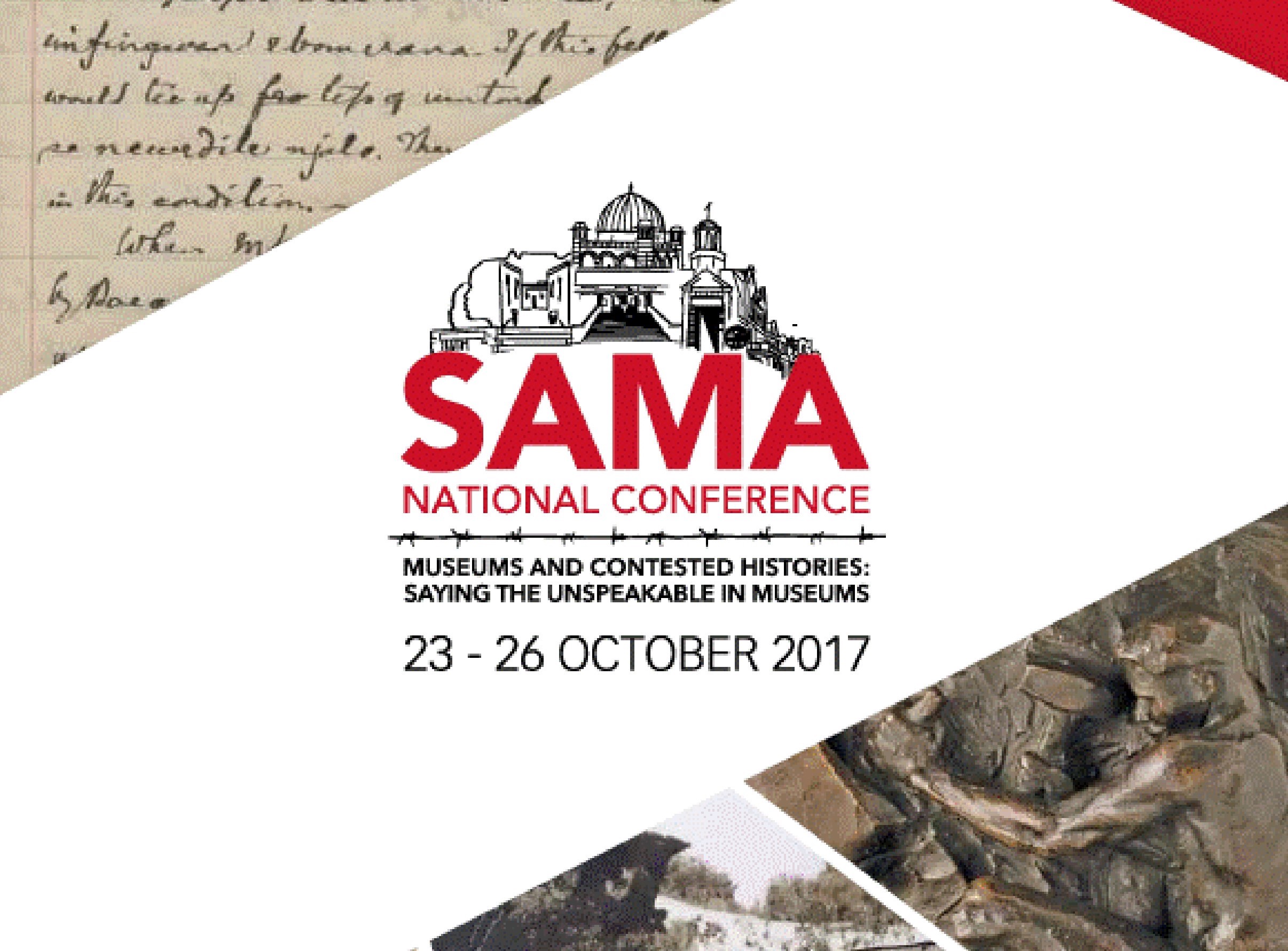|
29 November 2017
Contested histories: a conference report back

One of the archival assistants attended the Museum’s Association of South Africa (SAMA) annual conference this year. The theme of the conference was museums and contested histories: saying the unspeakable in museums. Conversations are happening around the world on what constitutes a museum. These discussions are on the forefront of museum studies in the developing world. Reconceptualising value in museums and who ascribes this value is a part of this process.
The keynote address was by SAHA board trustee Prof. Ciraj Rasool, who opened the conference by discussing some of the complexities in museum spaces and what it means to decolonise the museum. He mentioned the need to change concepts of approach and the classification of value. He attributed the rehumanising of museums as something South Africa was bringing to the rest of the world. The idea of having active participating communities is increasingly being considered in museum spaces globally.
Another discussion happening in memorial and heritage spaces is interrogating and questioning the appropriateness, role and importance of monuments. Are they relics of the past or relevant historical objects? This was addressed in the session which brought together social movements and monuments which was sparked by the Rhodes Must Fall movement. This has initiated discussions globally on the relevance of outdated statues and memorials.
Heidie Boise, the heritage officer who dealt with the statue of Rhodes when the Rhodes Must Fall movement began, presented on her experiences on having to deal with the removal of the statue. What struck me from this presentation was that graffiti and protesters' interaction with the statue adds to the depth of the statue. To “clean” off these marks of protest would alter the history of the monument. This brought to the fore, ideas that the monument can change its meaning and is not fixed. In a few years the statue of Rhodes, with all its graffiti, will represent the spark of a period of change and the impact that this social movement has had on South Africa. While it may be too soon at this point, I believe in years to come the statue will be exhibited as a symbol of change and have a different meaning than commemorating the British colonialist. This is a form of reclaiming the past and reinterpreting ideas. Context here is so important.
The challenge of revealing untold stories and how to give a voice to the disenfranchised and silenced, in the white, patriarchal, heteronormative, colonial and authoritarian narrative was a recuring theme covered. A challenge for the heritage sector is bringing these to the fore while remaining intersectional and acknowledging the interconnected complexities in existence.
The conference was beneficial in the sense that it enhanced my awareness as an archivist working in the heritage sector of what it means to grapple and interrogate history. It made me consider the power of the archivist in deciding which stories are documented and who actively documents those stories. I am grateful to work for an institution that encourages introspection and constant querying of our interactions with the resources we have available. I wish there had been some sort of facilitated discussion with the different members of the conference. A chance for breakaway groups where different members would be given a chance to engage on the themes and topics of the conference and how they related to their own institutions. It is important to grapple with and consider the spaces we inhabit as curators, researchers, exhibition developers and educators. |







